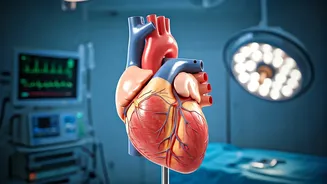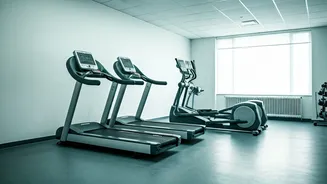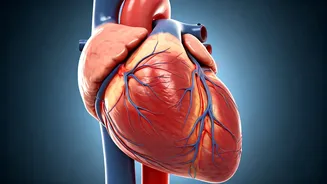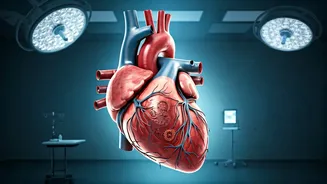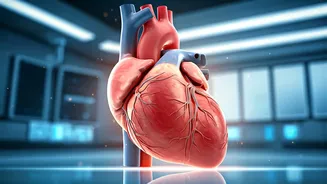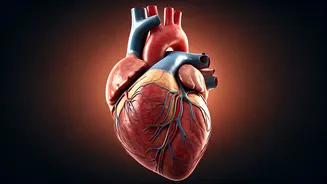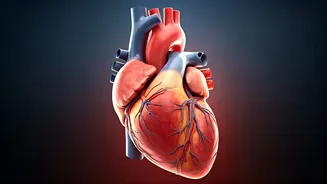Sushmita's Experience
Sushmita Sen shared her experience of remaining conscious during a cardiac procedure performed after she had suffered a heart attack. She mentioned that
it was ‘also the reason I survived.’ This statement sparked discussion and interest in understanding the potential advantages or disadvantages of this approach. The actress's account highlights the importance of open communication and transparency surrounding medical events, particularly when it comes to personal health journeys. It is a story that prompts exploration of the medical procedures and expert perspectives that helped her survive a heart attack and subsequent medical intervention.
Cardiac Procedure Overview
Cardiac interventions can range from minimally invasive procedures to more complex surgeries. One of the common procedures is angioplasty and stenting, where a blocked artery is opened using a balloon and supported with a stent. In some cases, depending on the patient's condition and the nature of the procedure, a patient might be offered the choice to stay awake during the process. The decision to use sedation versus conscious awareness involves careful consideration of the patient's anxiety levels, the complexity of the procedure, and potential risks and benefits. Staying conscious allows the patient to communicate with the medical team, but it can also be stressful for some individuals. The type of procedure and the individual's overall health play critical roles in determining the best approach.
Risks of Sedation
While sedation is used to minimize pain and anxiety during medical procedures, it has potential risks. Over-sedation can lead to complications, including respiratory depression and changes in blood pressure. Some patients may experience allergic reactions to the sedatives. In certain instances, deep sedation might be avoided to allow the patient to participate in the procedure if needed or to quickly recover after the procedure. Medical professionals carefully weigh these risks against the benefits of sedation, taking into account individual patient factors and the specifics of the procedure being performed. The goal is to provide a safe and effective experience for the patient, balancing the need for comfort with the avoidance of unnecessary risks.
Advantages of Awareness
Remaining conscious during a cardiac procedure can offer benefits in specific situations. It enables patients to communicate any discomfort or symptoms they experience during the intervention. This real-time feedback allows the medical team to make immediate adjustments. For some individuals, being awake provides a sense of control and reduces anxiety, particularly if they are well-informed about the procedure. Being awake may also help in faster recovery, compared to when sedation is used, as the patient recovers from the effects of anesthesia. The specific advantage of being awake depends on multiple factors, including the patient's physical state, psychological comfort levels, and the overall nature of the procedure.
Expert Opinions
Medical experts often emphasize that the decision to sedate or not to sedate a patient during a cardiac procedure must be made individually, depending on the patient's medical history, type of intervention, and personal preferences. Experts evaluate the patient's overall health status, including any pre-existing conditions and allergies, before deciding the best method. Discussions with the patient are vital to understanding their concerns and expectations. Some specialists would consider the potential benefits of the patient being able to communicate any symptoms during the procedure. The specific approach will vary, from conscious sedation to general anesthesia. This individualization is essential for ensuring both safety and the best possible outcome.
Post-Heart Attack Recovery
Recovering from a heart attack involves a comprehensive approach that includes lifestyle modifications, medication, and, in some cases, cardiac rehabilitation. After the heart attack, healthcare providers may monitor patients to check for complications and to develop a recovery plan. Cardiac rehabilitation programs can guide patients through exercise, education about heart-healthy habits, and emotional support. Doctors typically advise patients to follow a healthy diet, avoid smoking, and manage stress. The timeline for returning to work or demanding activities will vary depending on the severity of the heart attack, the type of procedure performed, and the individual's overall health. Patients must work closely with their doctors to determine a safe and appropriate return to normal activities.
Precautions and Precautions
Several precautions are crucial for a successful recovery after a heart attack and cardiac procedure. These include adhering to prescribed medications, controlling blood pressure and cholesterol, and maintaining a healthy weight. Regular follow-up appointments with the healthcare team help monitor progress and address any concerns. Patients may need to avoid strenuous activities for a certain period and gradually increase their activity levels as advised by their doctor. Stress management techniques are also important. Recognizing the signs of a potential cardiac issue, such as chest pain or shortness of breath, and seeking immediate medical attention if they appear, can make a difference in outcomes.
